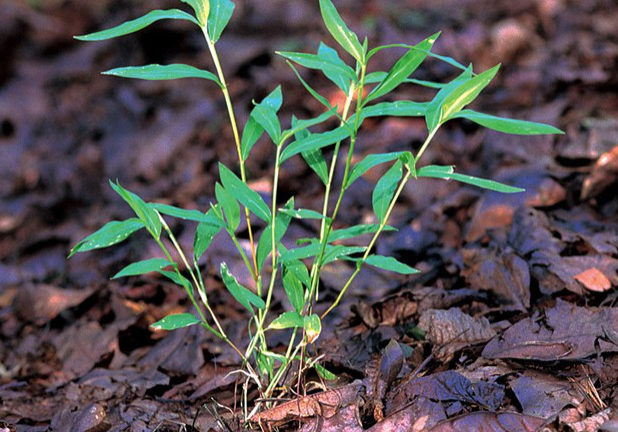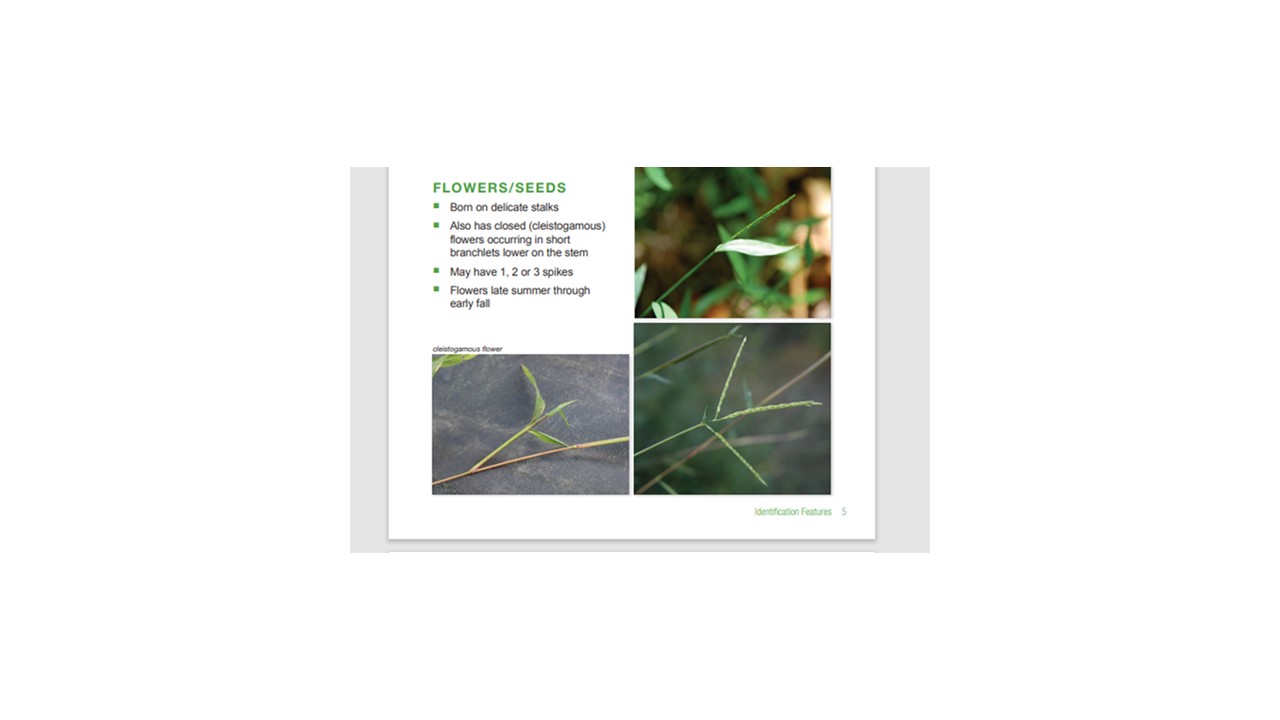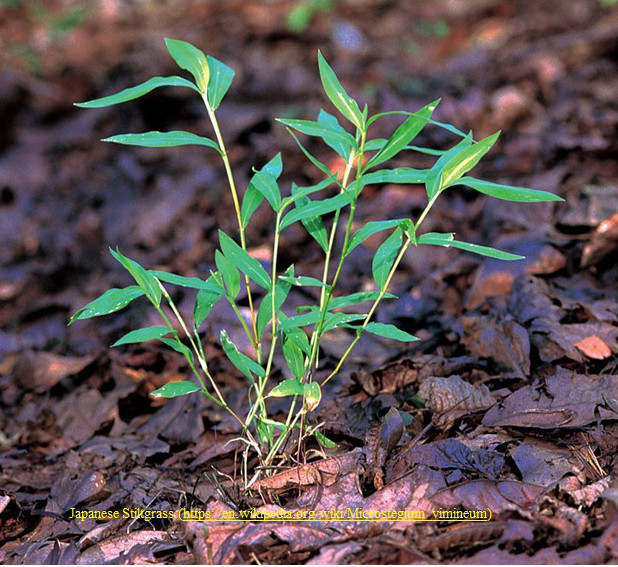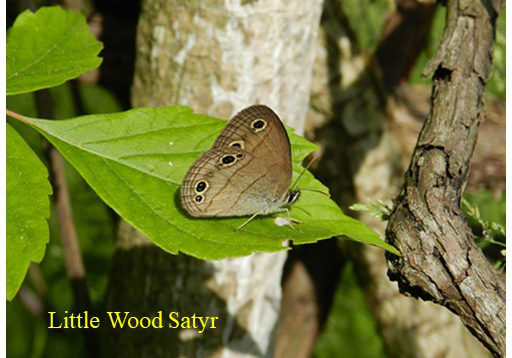
Japanese Stiltgrass (https://en.wikipedia.org/wiki/Microstegium_vimineum)
Japanese Stiltgrass (Microstegium vimineum), also known as Packing Grass, or Nepalese Browntop, is an aggressive invasive that is taking over parts of Liberty Reservoir. Like most invasive species Japanese Stiltgrass was accidentally introduced in the United States. It was first observed in Tennessee around 1919 when it was used as packing material in shipments of porcelain from China (https://en.wikipedia.org/wiki/Microstegium_vimineum). It initially spread throughout the southeastern United States and is now found in 26 states, including Maryland.
Stiltgrass, while invasive, serves as a host for satyr butterflies like the Little Wood Satyr and Northern Pearly-eye Satyr, both found in Carroll County Maryland. Nevertheless, Stiltgrass will take over your lawn if left to grow.
You are probably noticing Japanese Stiltgrass starting to turn brown (referred to as fall browing). By winter the Stiltgrass is gone but not forgotten. The winter thatch smothers Liberty Reservoir’s understory, compromising wildlife habitat and disrupting the Reservoir’s ecosystem. Japanese Stiltgrass is an annual so it dies off in winter but not before releasing thousands of seeds to grow again in the spring. The seeds of Japanese Stiltgrass can last up to five years in the soil. We can understand why USDA’s National Invasive Species Information Center refers to Japanese Stiltgrass as being “one of the most damaging invasive plant species in the United States.”
https://www.invasivespeciesinfo.gov/terrestrial/plants/japanese-stiltgrass
The USDA has published an excellent field guide on Japanese Stiltgrass. You can click (Ctrl-Click) on the following link to download this publication:


It is difficult to control Japanese Stiltgrass, but not impossible. Stiltgrass can be easily pulled out of the ground but you want to extract it before it goes to seed. Stiltgrass in our area tends to go to seed in late summer around September. Unfortunately many of our lawns have been infiltrated with Stiltgrass likely spread from seeds originating from adjoining properties such as Liberty Reservoir. Those areas of your lawn taken over by Stiltgrass will become brown, making it easy to identify by contrasting these invaded areas to your (still) green lawn. You can easily rake and remove the dead Stiltgrass, then reseed with a fescue as an alternative ground cover. The Stiltgrass will return next year but those affected areas will become more manageable over time. The primary objective in controlling Stiltgrass is to reduce its “seedbank”. A “seedbank” is “all the viable seeds that exist in the soil of a given area” (https://piedmontmastergardeners.org/control-of-japanese-stiltgrass/ ). The longer Stiltgrass is allowed to grow, the more difficult it will be to control its “seedbank”.
This is the reason why you should not till areas invaded by Stiltgrass; you are just planting the seeds. Stiltgrass could take several years before it is under control. During the summer keep invaded areas mowed on a low setting. There are several options available to control Stiltgrass so I encourage you to refer to the sources cited below to determine which option is best for your property. One possible option for controlling Stiltgrass in Liberty Reservoir is to use goats. Goats will eat Stiltgrass. Just be sure they are used before Stiltgrass goes to seed; otherwise, the goats will exacerbate the problem by spreading seeds over a larger area. In the meantime, Baltimore DPW and Maryland’s Department of Natural Resources are working on a comprehensive forest management plan that will include evaluating forest stands, canopy closure, and invasive plant/tree species. Data collection should be completed by the end of the year but analysis and recommendations will likely take significantly longer given the scope of this problem.


